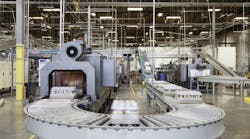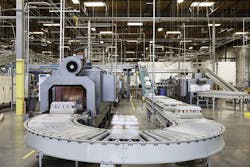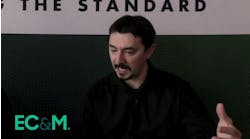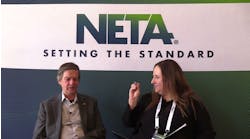A comprehensive formal energy audit is usually a good idea. But why not get the “low-hanging fruit” before incurring the time and expense? There are many things you can spot easily enough. Consider these methods in your early attempts to save energy.
Visual inspections
• Look at lighting. It’s easy enough to identify old legacy luminaires. Replacing them with modern LED offerings can slash energy bills substantially. Add in the lighting controls your current system doesn’t have or upgrade the controls it does have, and the savings become even greater.
• Look at exterior doors. If you have metal doors, you have heat losses even if those are insulated. A modern fiberglass door is stronger than a steel door and its insulating value is often greater than that of the wall it’s installed in. Design the door system with proper seals, and the savings become even greater.
• Look for light. In one facility, the plant engineer noticed a 4-inch-wide gap in an exterior wall, extending from the floor to the 30-foot ceiling. This was a major source of airflow between the interior and the exterior. It was hidden from view of the main production area. The plant engineer found it only because he purposely walked down the outside walls looking for problems.
• Try to find your make-up air heat exchangers. If you don’t have them, your make-up air is adding significant load to your HVAC system.
• Thermographic analysis of motor systems. One reason for thermographic inspections of conductor connections is to identify high impedance ones and fix them before they fail. What if you have 100 connections with only a few degrees of loss across the connection? That adds up!
Testing
• Insulation leakage testing. These leaks can result in a ground fault, but they also are energy vampires.
• Power quality analysis. Correcting low power factor at major loads saves energy. Look also for voltage imbalance, wave form distortion, and other problems you can fix.
• Thermographic analysis of motor systems. The energy losses in motor systems can be staggering in magnitude. That’s because there are many areas of potential loss that can add up. Consider the common gearbox. If it’s converting enough motor energy to heat to produce a 10°F rise over ambient, this might seem acceptable. But in actual cases, changing the dirty gear oil (and replacing it with synthetic) dropped that temperature to only one degree over ambient. How many gear boxes do you have?
These are just some of the things you can do to find easy energy savings. And you’ll probably get impressive results by doing all of these things. But this is really only a start. Press on from there with a comprehensive formal energy audit.





